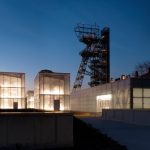About Katowice
11 interesting facts about Katowice:
Located in the heart of Upper Silesia, Katowice is a city that surprises with its dynamism, history and innovation. Although often associated with industry and hard work, Katowice has undergone a huge transformation in recent years, becoming a center of culture, business and education. Here’s what makes Katowice a place full of interesting:
Katowice is the youngest provincial city in Poland – although districts such as Dąb and Bogucice dates back to the 13th century, Katowice has had city rights since the 19th century (exactly from 1865). We also have a historic mining districts – Nikiszowiec, which is on the UNESCO world list.
 More than 2 million people live in our metropolis.
More than 2 million people live in our metropolis.
Katowice is the capital of the Upper Silesian-Upper Silesian Metropolis, which, as of 2017, officially unites 41 cities and boroughs of our voivodeship. It is the largest agglomeration in Poland, overtaking even the capital Warsaw in terms of population.
 There were more than 50 coal mines in the area of Katowice
There were more than 50 coal mines in the area of Katowice
It is not without reason that to this day Katowice is associated with heavy industry and hard coal precisely. Most of them were established in the 19th century, and the coal industry was active until the 1980s. Then the restructuring of the industry began, and almost all the mines were closed (only three are currently „mining” in Katowice).
Fortunately, many post-mining areas have been successfully revitalized, and their past has become the backdrop for rewritten histories. The best example is the Silesian Museum, which was established on the site of the former „Katowice” mine.
NOSPR is the largest concert hall in Poland
1800 – that’s how many seats the main hall of Katowice’s NOSPR has. The same number of seats has the concert hall of the National Music Center in Wroclaw, but the NOSPR building is unique not only in terms of quantity, but also quality. The acoustics, which is considered one of the of the best in the world, was supervised by Japanese master Yasuhisa Toyota of Nagata Acoustics.
Spodek is one of the most famous arenas in Poland. It hosts the finals of the Men’s Volleyball World Championship, many concerts and, for example: the Intel Extreme Masters. Spodek has hosted many famous artists, celebrities and famous people, one such guest was, for example, Fidel Castro or Metallica. Its steel dome weighs 100 tons.
The shape of Sodek, the city’s most distinctive building, was not at all intended to resemble a ufo. The design was dictated by safety issues, as it was built in a place prone to sinkholes, landslides and other damage from fossil damage.
 Almost 50% of Katowice’s area is green space
Almost 50% of Katowice’s area is green space
Little, as much as 42 percent of the city’s area is covered by forests.
Ideal places to take a break from the hustle and bustle of the city are the Three Ponds Valley, Sztauwajery, Silesian Park, Kosciuszko Park.
 In Katowice we have 14 Universities educating students in 103 fields of study. Home to several prestigious universities and institutions, Katowice is an educational powerhouse that draws students and researchers from around the world. The Medical University of Silesia, The Silesian University of Technology, University of Economics, and The Silesian University are just a few of the institutions that contribute to the city’s intellectual vibrancy. These campuses are conflation of ideas, fostering innovation and knowledge exchange across various disciplines.
In Katowice we have 14 Universities educating students in 103 fields of study. Home to several prestigious universities and institutions, Katowice is an educational powerhouse that draws students and researchers from around the world. The Medical University of Silesia, The Silesian University of Technology, University of Economics, and The Silesian University are just a few of the institutions that contribute to the city’s intellectual vibrancy. These campuses are conflation of ideas, fostering innovation and knowledge exchange across various disciplines.
 In Katowice we have more than 20 museums, including the Silesian Museum, Guitar History Museum, Wilson Shaft Gallery, Silesian Freedom and Solidarity Centre, Museum of Computer and Information Technology or WALCOWNIA Museum of Zinc Metallurgy.
In Katowice we have more than 20 museums, including the Silesian Museum, Guitar History Museum, Wilson Shaft Gallery, Silesian Freedom and Solidarity Centre, Museum of Computer and Information Technology or WALCOWNIA Museum of Zinc Metallurgy.
The largest private gallery in Poland is the Wilson Shaft Gallery.Its area is as large as 2,500m².
Katowice Market Square is quite different from the squares of old Polish towns, there are buildings built in the 19th century, but many of them were demolished during the times of the communist regime. During the summer time there are palm trees and deckchairs set up here and the square is more like a seaside resort.
 Katowice has been announced as European City of Science 2024 (EMN 2024). This honourable title is awarded by the EuroScience organisation in cooperation with the European Commission.
Katowice has been announced as European City of Science 2024 (EMN 2024). This honourable title is awarded by the EuroScience organisation in cooperation with the European Commission.
The year 2024 will belong to the European City of Science! For 50 weeks – from January to December – Katowice will be transformed into a living laboratory that will provide inspiration, education and innovation on a local, regional, national and also European level. Four of the 50 weeks will belong to the Medical University of Silesia in Katowice. Students and employees of the University are invited to submit proposals for activities that can be organised as part of them.
 Follow in the footsteps of the Beboks – “Beboki” refer to Silesian folk legends. The figures are made using the traditional bronze casting method, they are located in various places in Katowice and new ones are constantly appearing. They are meant to act as guides to Katowice, and their task is to tell the story of the city’s most characteristic places, promote elements of Silesian identity and enrich the spirit of the region.
Follow in the footsteps of the Beboks – “Beboki” refer to Silesian folk legends. The figures are made using the traditional bronze casting method, they are located in various places in Katowice and new ones are constantly appearing. They are meant to act as guides to Katowice, and their task is to tell the story of the city’s most characteristic places, promote elements of Silesian identity and enrich the spirit of the region.
